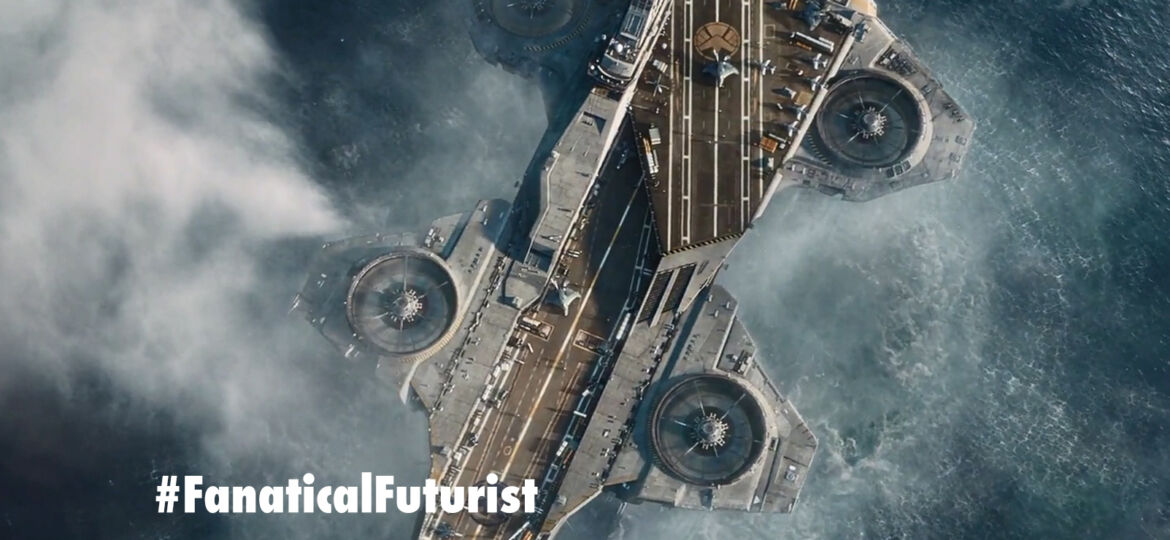
WHY THIS MATTERS IN BRIEF
Fast and dramatic advancements in the field of drones and autonomous warfare are calling the role of traditional aircraft carriers into question, and one day they could be replaced entirely.
Earlier this week the US Department of Defense (DOD) announced it wants the ability to launch and recover it’s increasingly large and diverse range of autonomous and semi-autonomous drones, everything from its new hunter-killer swarms to plain reconnaissance drones, from its worldwide fleet of C-130 Hercules transports, essentially turning them into what some are arguing, would be the world’s first flying aircraft carriers. Yes Marvel fans, the moment you’ve all been waiting for has arrived, but don’t expect them to quite look like the “Heli-carriers” you’ve seen in the movies…
Initially the US DOD is focusing on being able to deploy and recover small drones nicknamed Gremlins, named after the tricksters of the air, that would be equipped with customised payloads and, as and when needed, turned loose on enemy defences, doing everything from intelligence gathering to target acquisition and destruction. And when you think about it it’s easy to see why people are starting to call the C-130’s the new aircraft carrier of the skies.
After all, when you think about the jobs that today’s traditional aircraft carriers perform, which range from aid, defence, offence, intelligence gathering and supply, among other things, increasingly more and more of these roles can be fulfilled, in some cases, more cost effectively and efficiently by squadrons of drones, in part eliminating the need for traditional air arms and crews, something that’s reinforced, to some degree, by the US’s recent decision to roll out the first fully autonomous drone squadron out of Jacksonville, Florida, and the US Marine’s enthusiasm for a fully autonomous F-35 drone. And as the C-130 and its next generation variants start looking more like airborne versions of the big naval carriers, which, lest we forget are hugely expensive to build and maintain, it wouldn’t be beyond the pale that at some point people will start to ask questions about where traditional aircraft carriers fit in this new world order.
One thought, for example, that was positioned earlier this year, is that they could become floating drone factories, using advanced manufacturing technologies, such as 3D Printing and 4D Printing, and even possibly Bioreactors and Molecular Assemblers, to manufacture drones, food, ordnance and weapons on demand.
In the meantime though DARPA, the Defense Advanced Research Projects Agency, has awarded two contracts to General Atomics, the inventors of the Predator drone, and Dynetics to develop “complete preliminary designs for full scale technology demonstration systems, as well as develop and perform risk reduction tests of individual system components.” In other words, they want a working drone with key components already tested.
At first the Gremlins DARPA want the pair t build will be small, low cost drones that can be equipped with a variety of different payloads for different purposes. Each one will have a payload limit of 60 pounds and a range of 300 miles, meaning that a C-130 carrying them could fly near enemy air defences during wartime while it spits the drones out the back. During peacetime or a crisis, Gremlins could fly near the borders of potential adversaries, collecting signals intelligence, imagery, and other data without putting pilots at risk.
But why stop there?
While it’s natural to assume the Gremlins will be punted out of the back of the C-130’s there are also a number of people who are starting to circulate the idea that larger drones, like autonomous F-16’s or command and control F-35’s, could be suckered onto the side of the aircraft like lampreys, attaching and detaching when they’re needed, and once the Gremlins are airborne why not switch control of them from the C-130 to other airborne drones or platforms? The options are limitless, and pursuing any one of them in earnest could change the balance of future warfare.
The next phase of the Gremlin initiative, Phase 3, will involve actually launching and recovering the drones from the C-130 transport, and that will happen in or around 2019.

















Very Bad idea.
What goes up … must come down.
They pinched the idea from Dr Who!!